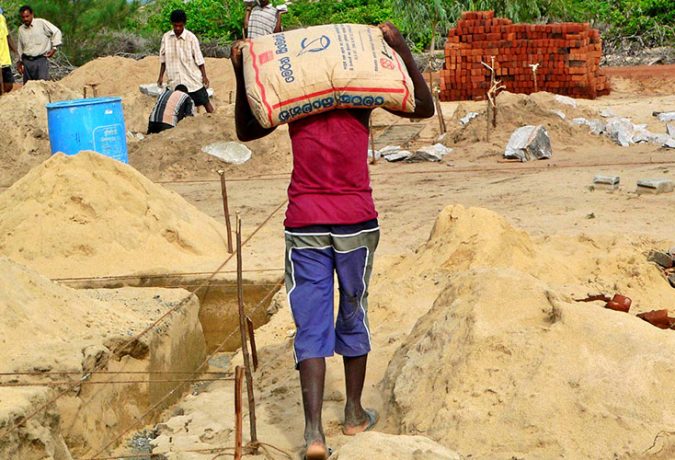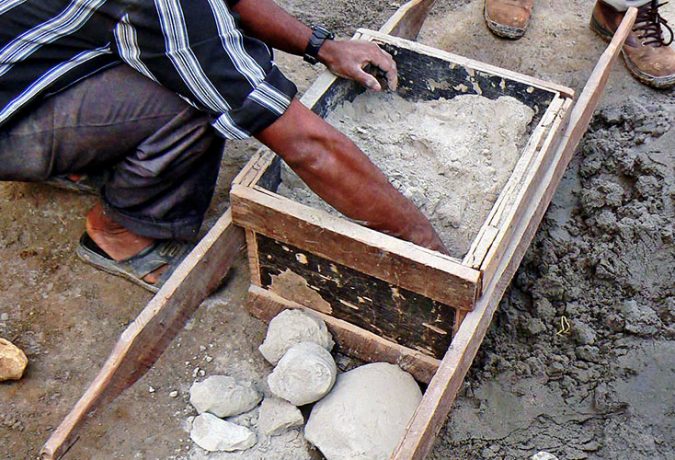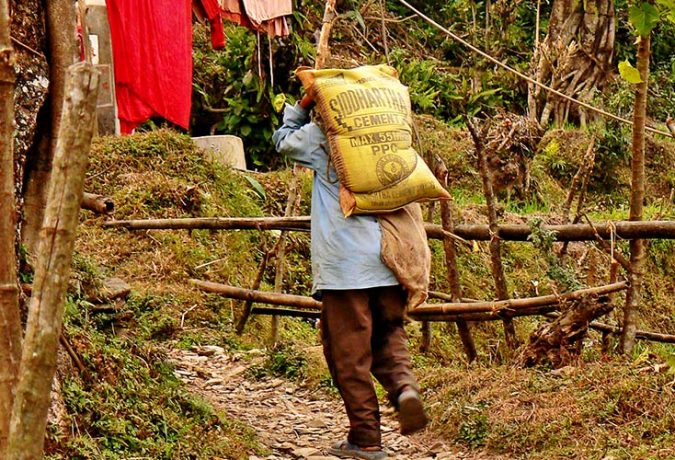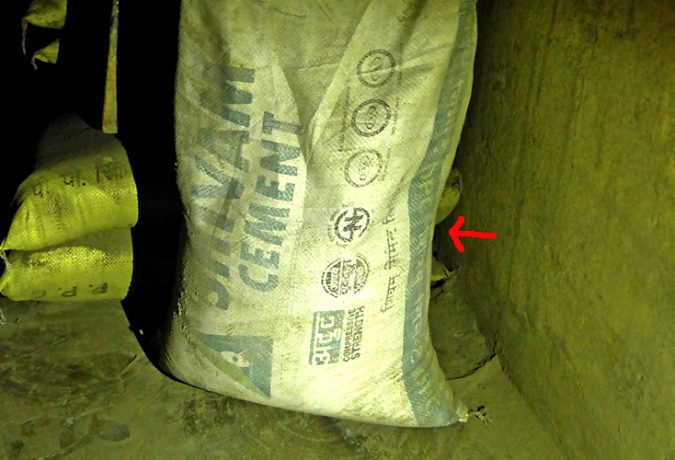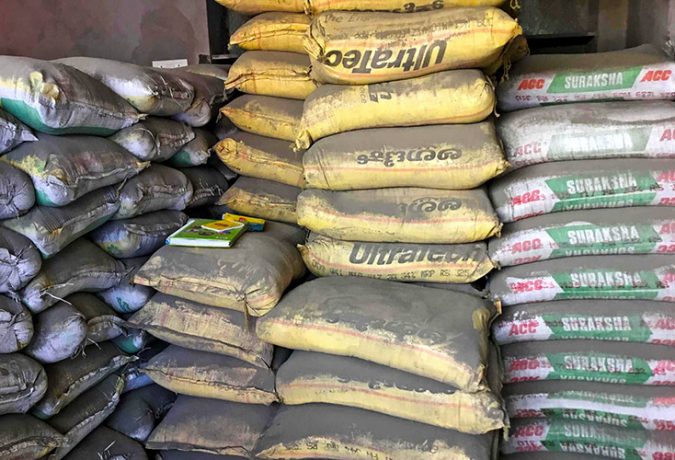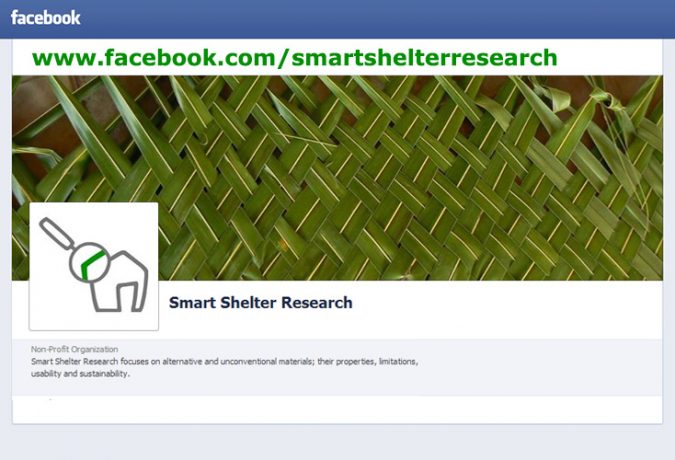Material Properties for Cement
Requested Research
- Literature review on the influence of cement quality in mixtures for mortars and concretes, with a particular focus on freshness and local brands.
- Literature overview of Building Biology and it’s components in general.
- Main request 1. Determination of the key material properties of cement, that may be of influence on the strength development of mortars or concrete elements.
- Research about what possible electromagnetic fields and radiations we may expect, in any kind of alternative construction type or building element.
- Main request 2. Determination of suitable lab testing methods for obtaining the necessary material properties, including actual testing of specimens. Both main requests are preferably done in collaboration with Structural and Earthquake Engineering.
- Develop tools and machines for on-site testing of material properties of cement in rural and remote areas. Preferably with Mechanical and Product Engineering.
Status of Research
This is a KEY assignment within the overall SMARTnet project, where all disciplines come together. Open for students and professionals of Architecture and Material Science, as well as for Mechanical and Product Engineering, as well as for Structural and Earthquake Engineering. For more info please contact Martijn Schildkamp at info@smartshelterresearch.com or see our website www.smartshelterresearch.com
Background: Material Properties of Non-Engineered Techniques
The knowledge of how conventional techniques behave in earthquakes is quite high and such techniques have been tested thoroughly. Brick masonry walls and concrete structures can be calculated because the material properties are well known. We can even make quite elaborate computer models of such engineered structures.
This is not the case for most traditional, natural and alternative materials. It is very difficult to model or calculate techniques like stone masonry or earthen structures, due to a high ratio of uncertainties and variables such as material inconsistency and local workmanship. Somehow, these variables must be taken into account.
Background: Rubble Stone Masonry
Our focus is on rubble stone masonry as it is still widely used in the Himalayan areas, which consists of field stones and mortar, which (in the case of cement mortar) is a combination of cement, sand and water. If we incorporate reinforced concrete bands into the walls, we must also add aggregates and reinforcement steel to the list of materials.
This particular research is focusing on each of these materials separately and aims to gain better understanding of the material properties of stones, cement, sand, water, aggregates and steel bars, by investigating the effects of this particular element within their combined actions into mortars, concretes or masonry.
Material: Cement
Traditionally, rubble stone masonry is built with mud mortar. In seismic areas the use of mud is not recommended, as was painfully demonstrated during the 2015 Gorkha earthquakes in Nepal, causing widespread damage and collapse among these low-strength masonry buildings. Therefore, cement mortars are recommended for the masonry with bricks, blocks and stones.
Cement is a binding agent used for construction purposes, that sets, hardens, and adheres to other materials to bind them together, such as sand for mortars, or sand with aggregates in concretes. Cement is characterized as either hydraulic or non-hydraulic, depending on the ability of the cement to set in the presence of water. Hydraulic types of cement set and become adhesive due to a chemical reaction between the dry ingredients and water. It comes in several types, such as Ordinary Portland Cement (OPC) and Portland Pozzolana Cement (PPC). Different grades of cement exist, such as Grade 43 or 53, and different types of cement can be used for different mortar types (S, N, M). Many different brands are available in the markets, with many quality stamps, such as in Nepal on the picture below.
The first step in this assignment is to undertake a literature review and to compile a clear and concise overview of all possible cement types, as well as the differences between cement brands in the Himalayan areas.
Material: Cement
Traditionally, rubble stone masonry is built with mud mortar. In seismic areas the use of mud is not recommended, as was painfully demonstrated during the 2015 Gorkha earthquakes in Nepal, causing widespread damage and collapse among these low-strength masonry buildings. Therefore, cement mortars are recommended for the masonry with bricks, blocks and stones.
Cement is a binding agent used for construction purposes, that sets, hardens, and adheres to other materials to bind them together, such as sand for mortars, or sand with aggregates in concretes. Cement is characterized as either hydraulic or non-hydraulic, depending on the ability of the cement to set in the presence of water. Hydraulic types of cement set and become adhesive due to a chemical reaction between the dry ingredients and water. It comes in several types, such as Ordinary Portland Cement (OPC) and Portland Pozzolana Cement (PPC). Different grades of cement exist, such as Grade 43 or 53, and different types of cement can be used for different mortar types (S, N, M). Many different brands are available in the markets, with many quality stamps, such as in Nepal on the picture below.
The first step in this assignment is to undertake a literature review and to compile a clear and concise overview of all possible cement types, as well as the differences between cement brands in the Himalayan areas.
Quality of Cement
Cement is an expensive component for many people in developing countries, and for that reason they often reduce the amount of cement in their mixtures to save costs, resulting in a bad quality of mortar and concrete elements.
However, the amount of cement within the mixing ration is not the main focus of this research. This assignment looks into the quality of the cement itself.
In many places of the world cement is difficult to obtain, such as in rural and remote areas where cement must travel long distances before it reaches its final destination on the construction site. The cement bags are transported from the cities to the local market in the mountains, on bumpy roads by tractors or on top of local buses. Here they are sometimes stored for long periods of time before they are carried further on the backs of porters. The way and care of transportation, as well as the conditions of storage, are of great influence on the quality and freshness of the cement. It is often seen that the cement has become moist and that lumps have formed in the bags. People will try to pulverize the lumps and put these into their mixes anyway
Testing of Cement
I am text block. Click edit button to change this text. Lorem ipsum dolor sit amet, consectetur adipiscing elit. Ut elit tellus, luctus nec ullamcorper mattis, pulvinar dapibus leo.
I am text block. Click edit button to change this text. Lorem ipsum dolor sit amet, consectetur adipiscing elit. Ut elit tellus, luctus nec ullamcorper mattis, pulvinar dapibus leo.

